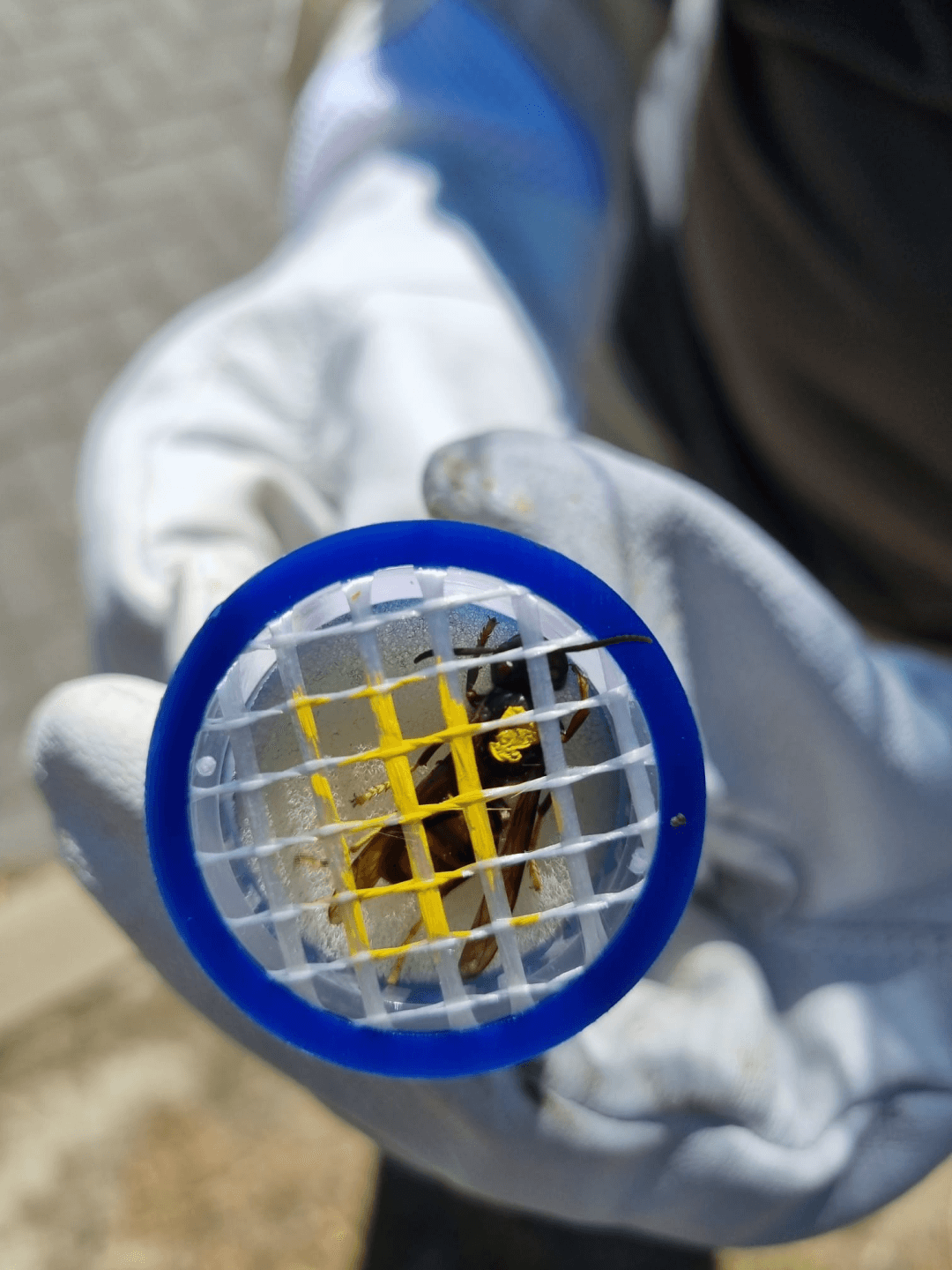Did you know that wasps are basically drug addicts? Their young secrete something that’s quite like sugar for the protein that their workers provide them. Protein that was gotten by going after caterpillars or aphids and whatnot. But by the end of the summer there’s no more larvae to give protein to, no larvae mean no more sugar.
And by then they’re addicted to it, so they’ll be coming for yours. It’s why at this time they’re not that much of a nuisance yet, but they will be.
At least if they’re just wasps. Hornets are a whole other story, especially the ones known as Asian hornet.
I’m not sure if you, my dear reader, have an issue with these little fuckers, but here in Belgium it’s gotten so big that they are making the news. These things are an invasive species that arrived here a few years ago and are rapidly expanding. Which is a bad thing for the bees, since they’re one of the main targets of this hornet. And that’s not a good thing since our bees are not used to this predator, they don’t have the experience their Asian cousins have with it, so they don’t stand a chance. I had one hover around my hive the other day, did not enjoy seeing that.
Luckily there are a lot of volunteers trying to find the nests to exterminate them. But there’s almost no stopping. The reason for this is because an Asian hornet makes a primary nest, usually somewhere low to the ground. And once they have enough workers they start on the secondary. A secondary nest can spawn 50 to 500 new queen, who each will make their own nests, and so on and so on.
As you can see, that’s not great.
Now, if you were to tell me a few years ago that in the future I would be part of a beekeeping association and be hunting for these hornet nests I’d just find it amusing; “Me a beekeeper? Hah”

And yet here we are, a few weeks into my new hobby and I have to admit that it is a new passion of mine. Who knew that I could enjoy the whole beekeeping process so much. I sure didn’t.
I normally am more of a winter than spring/summer man, but now I just can’t wait for spring. Because that would mean more bees.
And I’m already preparing, I have a lot of plans concerning these little ones, and I’ll be doing my utmost best to help them survive.
And right now, that’s by finding ways to get rid of the Asian hornet. The problem with finding them is that it can take a bit. “Why not just poison the fuck out of them” you ask yourself. Well, I would, but there’s a bio diversity too, if I poison these hornets, I will also be poisoning a bunch of wasps and European hornets, and they are quite important too. Despite us seeing them as pests, they are still an important part of nature, they too are pollinators. Their drug addiction is just annoying by the end of august and beginning of September 😉
In order to find and capture Asian hornets you make a jar add some dry white wine, some beer, some wasp attracting fluid, some sugar, stir add a piece of a mop and boom. You hang it up and wait for them to come. They will fill themselves with the delicious liquid that is almost irresistible for them, go to the nest to deposit it, and come back.
So what we do, is we mark them, see how long it takes for them to come back and then we know how close or far the nest is.
The Asian hornet can fly about 40km/h, meaning that’s roughly 600 meter per minute. So if he’s back within a minute, you know the nest is about 300 meters from you as the bird flies.
We had a jar that had 40 seconds, at that point you start searching the trees, or hopefully can follow the flight path. Unfortunately there were houses around.

Luckily though, someone found the nest that we were searching for under the roof tiles. This would be a primary one, a secondary is usually high up in the trees and is quite huge.
But this nest is not the one that’s near my hive, no this one was near my buddy’s hive. Mine has yet to be found.
We’ll see what can be done.
Stay tuned o7
